Olathe, KS Pollen and Allergy Report for Summer 2023
Pollen Allergy Trends in Olathe, KS
When is pollen lowest in Olathe, KS?

February
Lowest month total PPM
Avg. PPM
When is pollen highest in Olathe, KS?

April
Highest month total PPM
Avg. PPM
How does pollen in Olathe, KS compare to Kansas?
Olathe has a higher average PPM than the state of Kansas.
Olathe yearly avg PPM:
Kansas yearly avg PPM:
How does pollen in Olathe, KS compare to the USA?
Olathe has a higher average PPM than the USA.
Olathe yearly avg PPM:
USA yearly avg PPM:
Is pollen worse this year in Olathe, KS?
Spring 2023 was worse than spring 2022.
Spring 2023 PPM:
Spring 2022 PPM:
Average PPM in Olathe, KS
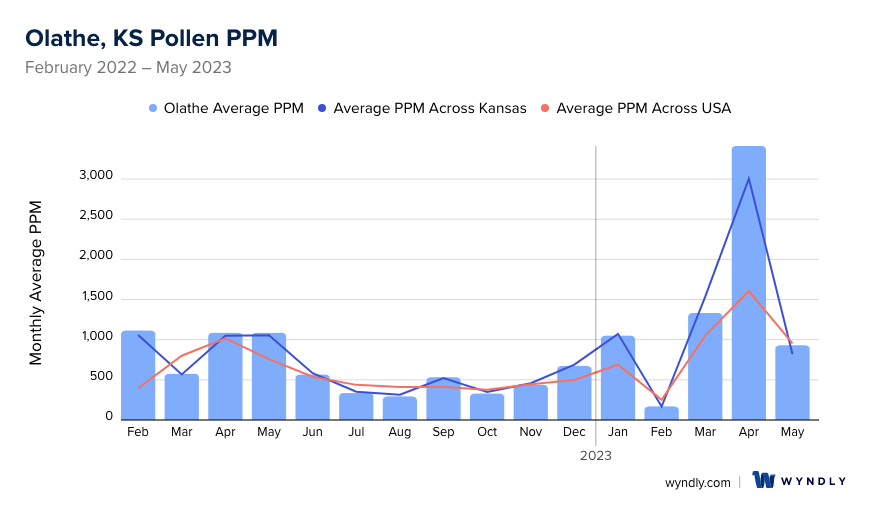
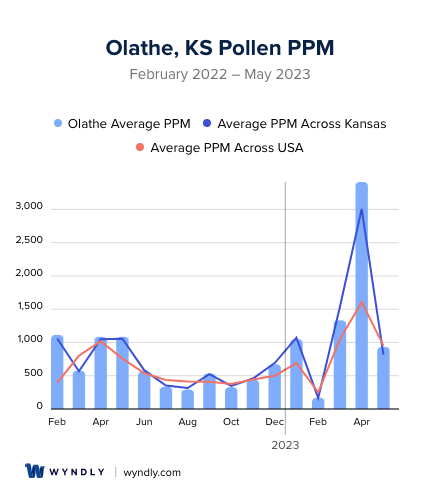
Olathe, KS Pollen and Allergy Breakdown by Month
Grass
When is grass pollen highest in Olathe, KS?
February has the highest grass pollen in Olathe, KS with an average PPM of
When is grass pollen lowest in Olathe, KS?
December has the lowest grass pollen in Olathe, KS with an average PPM of
Tree
When is tree pollen highest in Olathe, KS?
April has the highest tree pollen in Olathe, KS with an average PPM of
When is tree pollen lowest in Olathe, KS?
September has the lowest tree pollen in Olathe, KS with an average PPM of
Weed
When is weed pollen highest in Olathe, KS?
April has the highest weed pollen in Olathe, KS with an average PPM of
When is weed pollen lowest in Olathe, KS?
February has the lowest weed pollen in Olathe, KS with an average PPM of
Olathe, KS Pollen Monthly Breakdown by Pollen Type
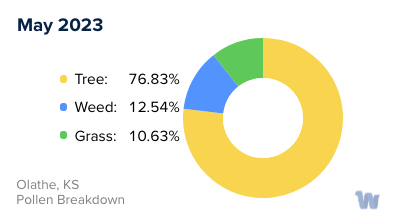
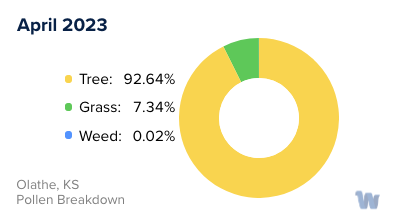
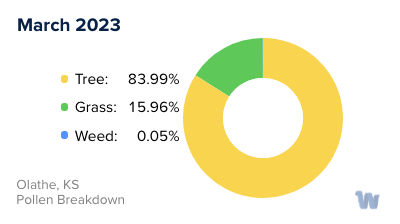
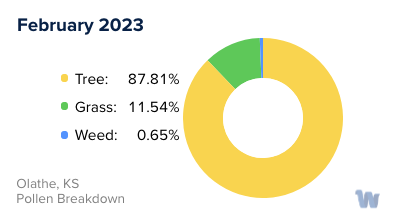

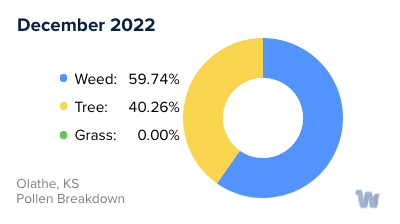
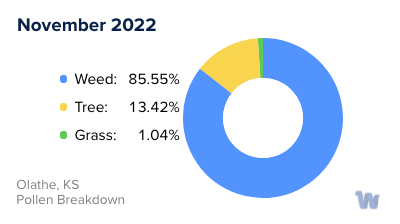
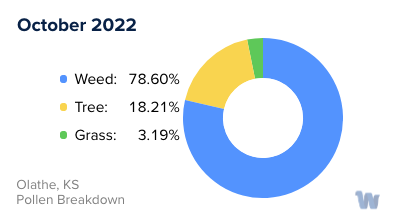
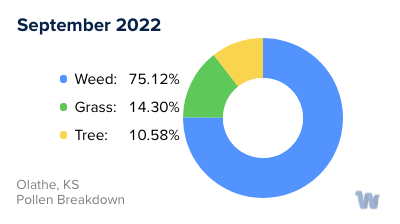
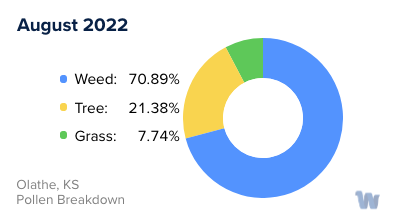
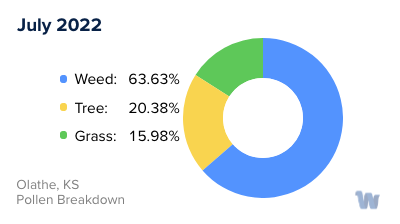
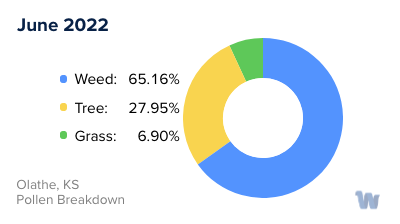
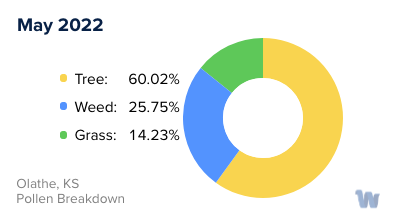
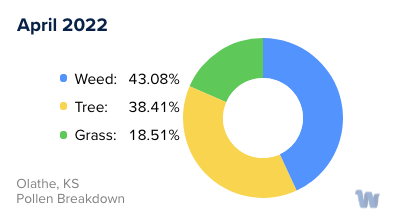
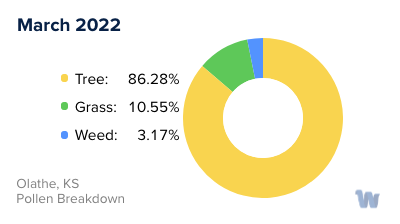
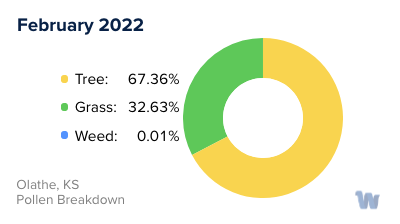
Pollen and Hay Fever in Olathe, KS
Pollen allergies, often referred to as hay fever, are a common health concern in Olathe, Kansas. The three main types of pollen that contribute to these allergies are tree, grass, and weed pollen, including species like bluegrass, ryegrass, Bermuda grass, orchard grass, ragweed, wormwood, marsh elder, and several types of trees including willow, elm, sycamore, ash, and cedar. Additionally, pine is also a common pollen type in Olathe.
Pollen allergies in Olathe follow a distinct seasonal pattern. The allergy season begins in late February, typically following the cold winter months. The onset of spring is marked by a rise in tree pollen, which is the primary cause of spring allergies in the region. As the season progresses towards summer, grass pollen takes over as the primary allergen. Finally, the fall season sees a rise in weed pollen allergies.
It's important to note that certain months are particularly problematic for those with pollen allergies. April, May, June, and September are peak allergy months in Kansas, so residents with sensitivities may want to limit their time outdoors during these periods. Thankfully, the allergy season usually comes to an end with the first frost of winter, providing some respite to those affected.
However, while the outdoor allergen count drops during winter, indoor allergens can still cause issues for many allergy sufferers. Therefore, it's crucial to understand that managing allergies is a year-round task, even though the types of allergens one might encounter can change with the seasons.

